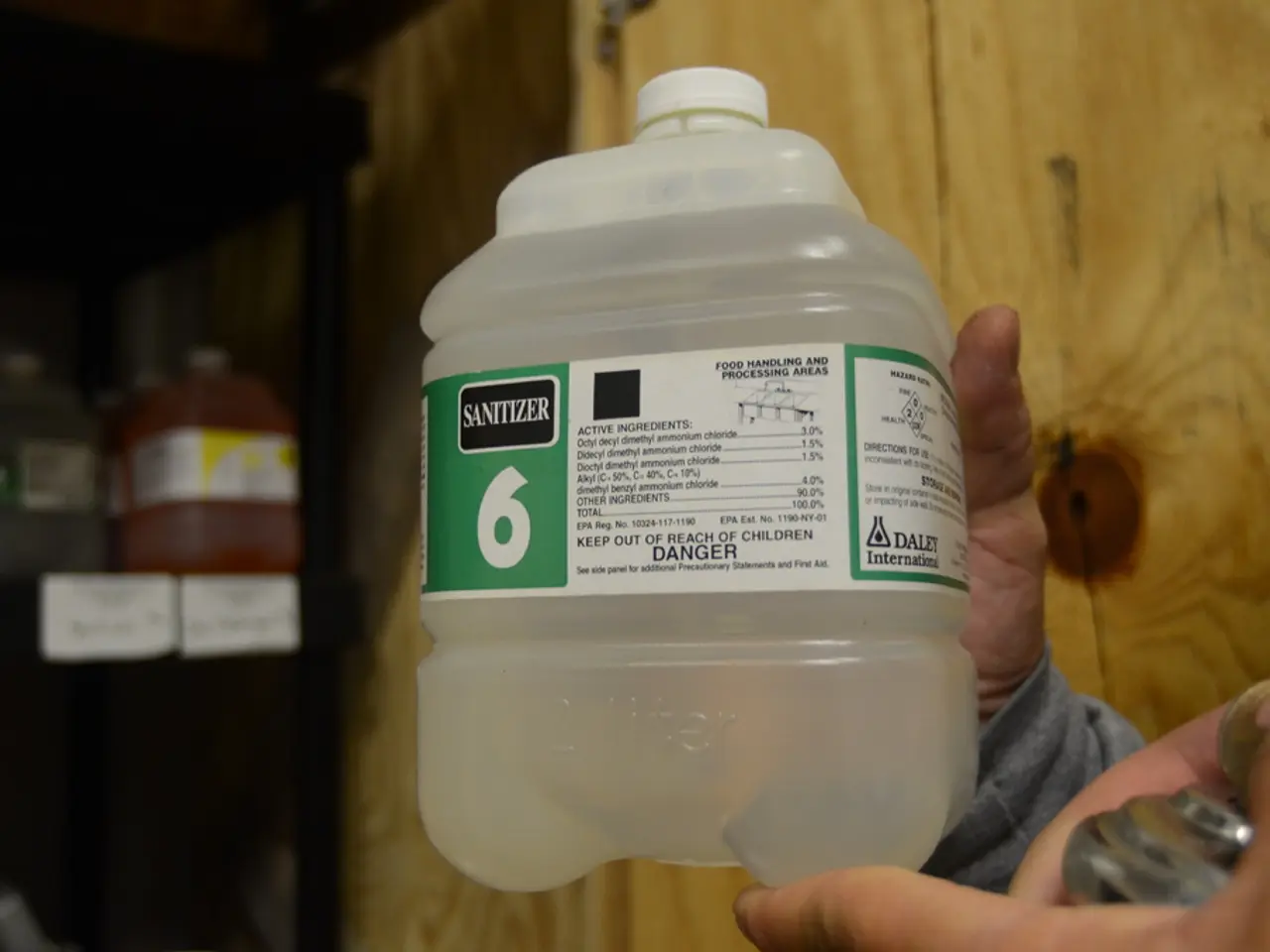Duration of a Sore Throat: Insights on Causes, Longevity, and Remedies
A sore throat can be a symptom of various conditions, including bacterial infections. Two of the most common bacterial causes are Group A Streptococcus (GAS) and Group C Streptococcus.
Group A Streptococcus, also known as Streptococcus pyogenes, is the most prevalent and clinically significant bacterial cause of sore throat. Symptoms of GAS-induced sore throat typically appear abruptly and can be more severe than viral sore throats. These may include a sudden onset of sore throat, painful swallowing, high fever, swollen, red tonsils with white pus patches or streaks, multiple red spots on the roof of the mouth, tender, swollen lymph nodes in the neck, headache, body aches, rash (in some cases, as in scarlet fever), nausea and vomiting (especially in children), and swollen lymph nodes in the neck.
Transmission of GAS occurs through respiratory droplets via coughing, sneezing, or sharing utensils, or by touching contaminated surfaces and then touching the nose or mouth. The infection is most common in children aged 5-15 but can also affect adults, particularly those in contact with children or those with weakened immune systems.
Antibiotics, such as penicillin or amoxicillin, are effective in treating GAS-induced sore throat. Antibiotics reduce symptom duration, decrease contagion, and prevent complications like rheumatic fever. Symptomatic treatment includes pain relievers and fever reducers. Untreated, the illness can last about a week or more, while antibiotics shorten the duration and reduce complications.
Group C Streptococcus is a less common cause of bacterial sore throat, and symptoms are usually milder and last longer. Antibiotics are usually not necessary unless symptoms are prolonged or complications occur.
In conclusion, understanding the differences between Group A Streptococcus and Group C Streptococcus is essential in diagnosing and treating bacterial sore throats. Prompt diagnosis, often via rapid strep test or throat culture, is crucial to guide appropriate treatment. Most sore throats are viral, so bacterial causes like Group A and C Streptococcus represent a smaller proportion of cases but require different management. If you suspect you or your child may have a bacterial throat infection, it is essential to seek medical attention for early treatment with antibiotics.
[1] Centers for Disease Control and Prevention. (2021). Group A Streptococcal Diseases. Retrieved from
- While bacterial infections can cause a sore throat, many cases are actually due to viral causes.
- Group A Streptococcus, or Streptococcus pyogenes, is the most common bacterial cause of sore throat.
- In contrast, Group C Streptococcus is a less common cause of sore throat, with symptoms often milder and longer-lasting.
- GAS-induced sore throat symptoms may include a sudden onset, painful swallowing, high fever, and white pus patches or streaks on the tonsils.
- Symptoms of Group A Streptococcus might also include multiple red spots on the roof of the mouth, tender, swollen lymph nodes, headache, body aches, rash (in some cases), nausea, and swollen lymph nodes in the neck.
- Transmission of Group A Streptococcus occurs through respiratory droplets via coughing, sneezing, sharing utensils, or touching contaminated surfaces.
- The infection is most common in children aged 5-15 but can also affect adults, particularly those in contact with children or those with weakened immune systems.
- Antibiotics, like penicillin or amoxicillin, are typically effective in treating GAS-induced sore throat.
- Antibiotics help reduce symptom duration, decrease contagion, and prevent complications like rheumatic fever.
- Symptomatic treatment for GAS-induced sore throat may involve pain relievers and fever reducers.
- Untreated, the illness can last about a week or more, but antibiotics can significantly shorten the duration and reduce complications.
- Antibiotics are usually not necessary for Group C Streptococcus-induced sore throat unless symptoms persist or complications occur.
- Understanding the differences between Group A Streptococcus and Group C Streptococcus is crucial for proper diagnosis and treatment of bacterial sore throats.
- Early diagnosis, typically via rapid strep test or throat culture, is vital for appropriate treatment.
- Centers for Disease Control and Prevention, Mayo Clinic, National Health Service, and American Academy of Pediatrics provide resources for understanding and treating sore throats.
- Children's health is particularly important, and handling bacterial throat infections promptly can help avoid complications.
- Chronic diseases, such as psoriasis, mononucleosis, and obesity, can affect overall health and wellness.
- Scientific research and advancements in health and wellness, such as in cbd and neurological disorders, contribute to understanding and treating various medical conditions.
- Sleep plays a key role in public health, as insufficient sleep can lead to obesity, diabetes, and cardiovascular problems.
- Workplace wellness programs can help preserve employee health and well-being, including by addressing respiratory conditions, digestive health, eye health, hearing, and fitness and exercise.
- Proper skin care, therapies and treatments, nutrition, and mental health management are essential components of total health and well-being.
- Education, self-development, personal growth, career development, job search, and skills training contribute to overall health and wellness by empowering individuals to make informed decisions about their health and future.







